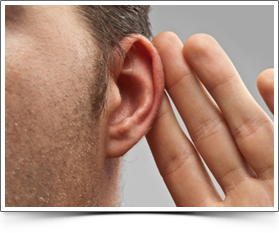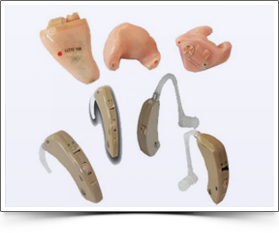Hearing Loss can happen to any person due to many factors like hereditary, infections or can occur suddenly due to causes like accidents or could be an aging process. All over the world millions of people are facing hearing problems. There are two major types of hearing loss:
Conductive Hearing Loss and Sensorineural Hearing loss
The Ear is an incredibly sophisticated and complex structure. A disease of the outer and middle part of the ear causes Conductive Hearing Loss. There are tiny sensory cells called the “Hair cells” in the inner ear that converts the sound waves into audible sounds, which are then understood, by the brain. Any damage to these leads to reduced sensitivity to sound is called Sensorineural Hearing Loss. No replacement of these cells is possible except for using an aid. Some types of Conductive Hearing Loss can be treated medically or surgically. Hearing aids are the only solutions for Sensorineural Hearing Loss and a few types of Conductive Hearing Loss.
Hearing Loss may lead to isolation and reduced quality of life. Early treatment with hearing aids is recommended because it often becomes physically and psychologically more difficult with age to get used to wearing hearing aids. Another success factor is that the hearing impaired person acknowledges the hearing loss and the need to use hearing aids. The advantages of using hearing aids are many, as it improves the communication and confidence of the user.
The modern Hearing aids are high precision, programmable, electronic devices. These amplify the sound and speech to the desired levels. These sophisticated devices require to be programmed properly by qualified hearing health care professionals who take many criteria into consideration to suite the need of the user. We use NOAH link with blue tooth technology to facilitate high-speed wireless hearing aid programming.
The most common types of Hearing Aids are
- Behind the Ear (BTE’s): These are placed behind the Ears and connected to an ear mould by a plastic tube.
- In the canal (ITC): These models have the electronics built right into the mould that sits in the Ear canal.
- Completely in the Canal (CIC): These are the smallest ones which are very closely placed into the canal in such a way that they are not visible from normal viewing and so has a high cosmetic value.
- Micro: These are the latest generation aids. These are small BTE’S which come in different colors.
The suitability of the hearing aid depends on the extent and type of hearing loss of the patient. Digital hearing aids are also gauged by the number of channels and bands they have. At present we have aids with channels and bands ranging from 2 to 15. Basically channels help in amplifying speech sounds and reducing surrounding noise. In short more the channels better the clarity of speech in noisy environments. The cost ranges from twelve thousand to one lakh forty five thousand per aid. The selected hearing aid is than programmed according to the patients hearing loss, needs, lifestyle and status of ear. Necessary software can be activated which could help patients listen to music, watch television and telephonic conversation. In short the hearing aid can be tailor made to suite individual needs.
It is better to use Hearing Aids in both the Ears, if there is hearing loss in both the ears. Hearing Aids will not restore hearing to normal. It is an aid. Realistic expectations and a positive outlook help in achieving a satisfied hearing aid user.








